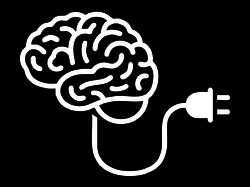AI + Design: Figma Users Tell Us What’s Coming Next
By
Josh Clark
Published Mar 23, 2024
Figma surveyed 1800+ of its users about their companies’ expectations and adoption of AI. Responses from this audience of designers, executives, and developers indicate that AI is making its way into most companies’ product pipelines, but the solutions they’re shipping are… uninspired.
Eighty-nine percent of respondents say AI will have at least some impact on their company’s products and services in the next 12 months; 37% say the impact will be “significant or transformative.” The executives overseeing company decision-making are even more bullish and much more likely to see AI as “important to company goals.”
But this kind of thinking presents its own risk. Our survey suggests AI is largely in the experimental phase of development, with 72% of those who have built AI into products saying it plays a minor or non-essential role. Perhaps as a result, most respondents feel it’s too soon to tell if AI is making an impact. Just one third of those surveyed reported improvements to metrics like revenue, costs, or market share because of AI, and fewer than one third say they’re proud of what they shipped.
Worth repeating: Fewer than one third say they’re proud of what they shipped. Figma also says that separate research has turned up “AI feature fatigue” among a general civilian audience of product end-users.
What I take from this is that there’s general confidence that “there’s some there there,” but what that means isn’t yet clear to most companies. There’s a big effort to jam AI into products without first figuring out the right problem to solve, or how to do it in an elegant way. Exhibit #1: chatbots bolted onto everything. Early steps have felt like missteps.
“AI feature fatigue” is a signal in itself. It says that there’s too much user-facing focus on the underlying technology instead of how it’s solving an actual problem. The best AI features don’t shout that they’re AI—they just quietly do the work and get out of the way.
Hey, design is hard. Creating new interaction models is even harder; it requires stepping away from known habits and “best practice” design patterns. That’s the work right now. Algorithm engineers and data scientists have shown us what’s possible with AI and machine learning. It’s up to designers to figure out what to do with it. It’s obviously more than slapping an “AI label” on it, or bolting on a chatbot. The survey suggests that product teams understand this, but haven’t yet landed on the right solutions.
This is a huge focus for us in our client work at Big Medium. Through workshops and product-design engagements, we’re helping our clients make sense of just what AI means for them. Not least, that means helping the designers we work with to understand AI as a design material—the problems it’s good at solving, the emergent design patterns that come out of that, and the ones that fall away.
As an industry, we’re entering a new chapter of digital experience. The growing pains are evident, but here at Big Medium, we’re seeing solid solutions emerge in product and interaction design.





